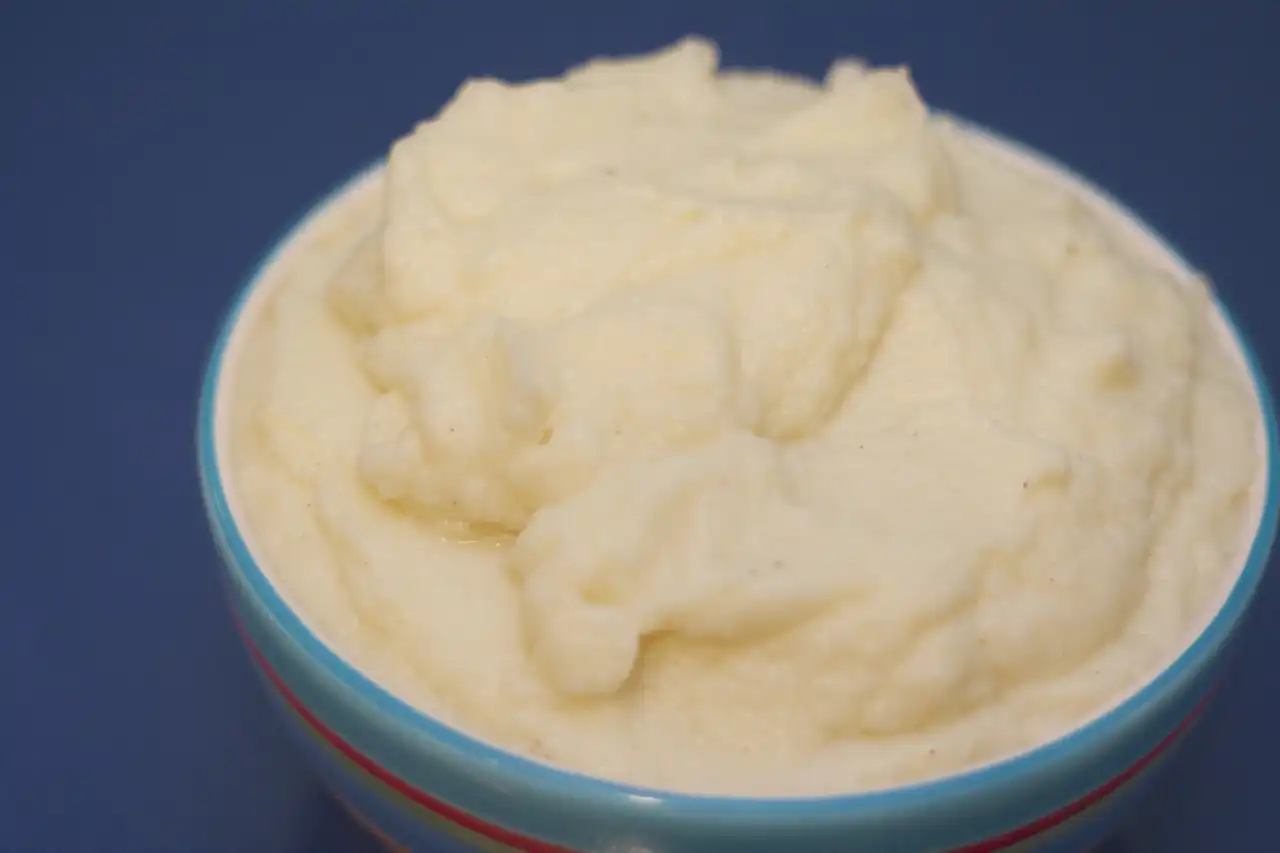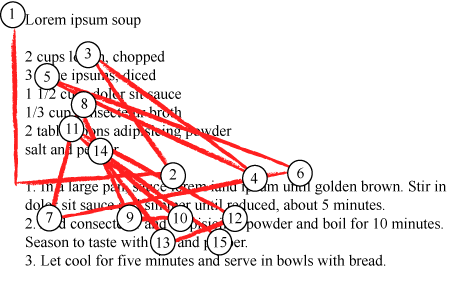

Most cookbooks and recipes that you've seen use a layout that was popularized in 1896 by Fannie Farmer in her best selling cookbook The Boston Cooking School Cook Book. Ms. Farmer's cookbook brought a new level of scientific rigor and thoughtfulness to the culinary world. She helped create the standard recipe format that we use today and is the reason that a teaspoon, tablespoon, and a cup are the common levels of measurement.

The classic format that Fannie Farmer made popular is to list all of the ingredients and then the instructions. Having all of the ingredients grouped together is great when you're making a shopping list, but separating them from the instructions creates a confusing zigzag reading pattern as you constantly switch back and forth between the ingredients and the instructions.
The sample recipe on the right highlights the back-and-forth required for a recipe with six ingredients and three steps.
The more complicated the recipe, the more likely you are to lose your place in the process and end up having to frantically scan the recipe for the a vital piece of information, inevitably while something is burning on the stove!
However, there's a simple change we can make to reduce this problem: combine the ingredients with the instructions using good design and typographic principles to make the ingredients stand out, the directions easy to follow, and the steps clearly outlined.
Here's how it works
This format is designed to allow you to follow the recipe from top to bottom without needing to refer back to earlier sections or lists of ingredients. Just start cooking.
By making ingredients bold it makes it easy to glance at the recipe to see what you need to add to your shopping list and to make sure that you have all of your ingredients before you start.
If you've had professional culinary training, this is where you yell at me about mise en place (the French term for preparing your ingredients before you start cooking). This format still permits mise en place since the ingredients are in bold and easily organized, but let's be honest, how many home cooks actually prepare all of their ingredients in advance? Most people just want to start cooking.
This format encourages and embraces a causal approach to cooking. Prepare each ingredient as you go and easily keep track of your spot thanks to the generous use of whitespace.
When a more complex recipe requires several items to be prepared and then combined, I've reorganized the steps. By following the recipe from top to bottom you end up doing everything in the right order and right when it's needed.
In other words, when mise en place matters, it's baked right into the instructions so you'll end up with delicious food rather than a failed experiment. These recipes are user friendly!
A few times each week I'll post a delicious recipe that I've tested dozens of times and have refined using the best combination of ingredients, instructions, and techniques. I've tried to optimized the flow of steps to ensure that you can follow the recipe from top to bottom with having to jump around, think ahead, or worry about mise en place.